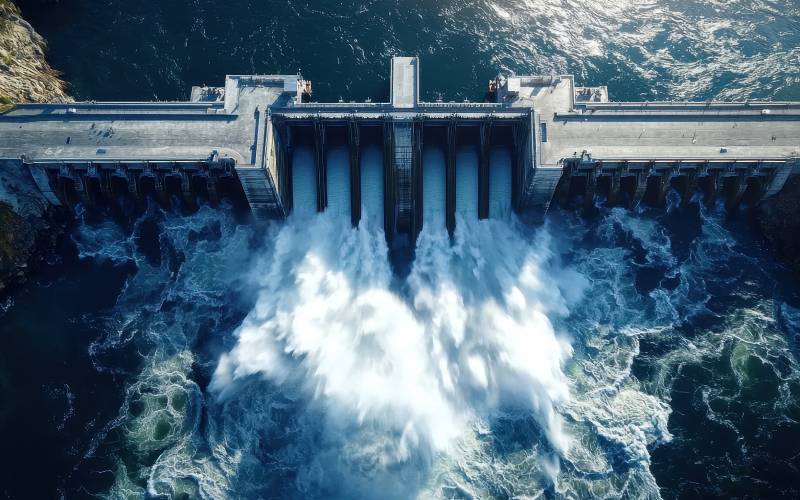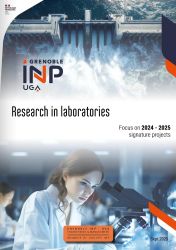
Long regarded as a mature technology, hydroelectricity is enjoying a revival. In France, large sites are already equipped and dams are already widely used. The scope for development now lies on a smaller scale, with micro-power stations. Installed on low-flow rivers, they enable electricity to be produced locally, without the need for heavy production and transmission infrastructure. However, they present new technical challenges: low flows, limited waterfalls, highly variable operating conditions.
The LEGI* and CREMHygG** teams are designing tailor-made turbines for this purpose, optimised by both numerical simulation and physical laboratory tests. The aim is to maintain high energy efficiency despite fluctuating parameters, while reducing line losses and boosting network resilience.
More flexible and safer infrastructures
In addition to micro-power stations, research is also focusing on adapting large-scale facilities to the demands of the energy mix. With the rise of solar and wind power, hydroelectric plants are being called upon more and more to compensate for intermittence. " Previously, a turbine started up once a day. Today, it can be called on a dozen times," explains Frédéric Dufour, a researcher at the 3SR* laboratory. These frequent start-ups, outside the optimum speed range, mean that we have to design turbines that are more flexible". Researchers are working on the shape of the blades, the number of vanes and the architecture of the engines to guarantee good efficiency over a wide operating range.
At the same time, plant safety is becoming an increasingly sensitive issue for an ageing fleet, particularly in the face of seismic risks or risks associated with new flooding regimes. The 3SR laboratory is developing sophisticated numerical models to simulate the behaviour of dams in extreme situations. Measurement campaigns are carried out, in particular as part of the Pereniti industrial chair, which led to the instrumentation of the Saint-Guérin dam. Among the innovations being studied is the installation of “fusegates” designed to increase water retention capacity, while ensuring the safety of the structure.
Towards intelligent hydropower
The hybridisation of energy sources is also creating new opportunities. The G2Elab* is exploring the coupling of hydropower and photovoltaics. On artificial bodies of water, floating solar panels produce electricity during the day, while the water is stored to be turbined at night. This complementary approach is reaching the industrialisation stage, notably at the Le Cheylas site in the Alps, where an EDF pumped-storage power station (STEP) is being designed to be equipped with a floating photovoltaic array.
Finally, digital technologies are transforming the way we maintain our facilities. Working with GIPSA-lab*, researchers are developing predictive analysis tools using data collected by sensors (pressure, temperature, leaks, vibrations, etc.). Artificial intelligence is used to identify weak signals of degradation before damage occurs. At the same time, reliability approaches are being developed as part of the Medelia Chair (Spretec, an Artelia subsidiary), which focuses on the mechanical strength of large metal structures, in particular the lock gates of the Compagnie Nationale du Rhône.
At the crossroads of civil engineering, fluid mechanics, power electronics and data science, hydropower continues to innovate. Firmly rooted in history, it is now looking towards a future that is resolutely sustainable and connected.
*CNRS / UGA / Grenoble INP - UGA



